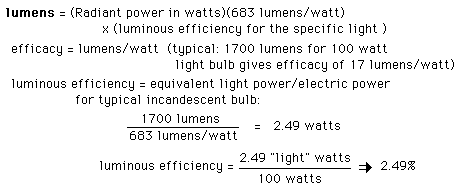I am bad 
Alright, it's 1:12AM, day after the what's the # of yrs? of the date of the 9/11/2001 Terrorist attack on the World Trade Centers (unlike jtr, I lost no person I knew when only 3,000 people died that day....while an estimated 700,000+ die every year in China from pollution).
But be that as it may, I thought about all of jtr's LED zealot status over the years at CPF, SR & here

. I look at all of his zealot proclimations about how LED's will save the world (Ok, a bit of an exaggeration, but jtr's excessively optimistic outlook on LED advancements are my 'model' of exaggeration

).
Was in CostCo this weekend, picking up my mother's monthy? $300 worth of pills for various senior citzen ailments...it's a very long story that would only make you depressed like Merc

. I saw Sanyo Eneloop charger & 8AA 2000ma, 4 800ma AA NiNH batteries for $27. Not bad.
Then I recalled when I got banned from CPF in Feb 2005? (and again, when they goofed on an upgrade that allowed me back for one more post, after jtr sent me a link to a thread he was posting on in the 'Cafe'...hehe, damn it's so funny how they get excited on CPF, and I instantly got banned again!!!
So anyway, lets' look at current LED efficiency to see if jtr's optimistic claims have come true over the last few years, shaw we?
Last time I was on CPF, seemed like Luxeon 3watt LED's overdriven with massivce heat sinks on Mag D cell flashlight could get upwards of 180 lumens for a $$$ price.
Now I looked at
http://www.batterystation.com/cr123a.htm
then :
http://www.lighthound.com/
and I see you can get single AA LED flashlights that output more than the formerly very expensive Korean owned/developed Surefire line, for much less that use either lithium ion recharable with protection circuits (recall even just a week ago, Dell laptop on fire with protected circuit Lithium batteries still failing, though there is a newer lower capacity CR123a Lithium Sulfur phosphate tech that's supposed to be fire proof

), or these great Sanyo Eneloop NiMH AA, or AAA rechargeables that hold their charge almost as long as a lithium battery, and don't cost much, can be used in digicams and all sorts of uses where standard AA, or AAA batteries can be used.
200 lumen output in a 2 cell CR123a for just $70 (made in China), not bad when you consider just 2 years ago, the top over driven 2 cell was only around 120 lumens, IIRC.
But I like smaller single cell LED sized flashlights. And they too are up in lumen output, almost as high as xenon bulbs in 2-cell lights that cost $25 or more. Get a single cell LED like those Xenix lines, for just over $50, and you have a long term reliable flashlight. Waiting for those 100+ lumen for 1 watt output. Do these new Luxeon Rebel premium LED's in the flashlights put out more than 100lm/w? Turbo mode, only can operate for 10 min. without damage, did I not read from jtr that cooling wasn't a problem, lol!???
DAMN, unlike Merc on caffiene energy drinks, I'm just about ready to crash into sleep...now!
Somewhere in the back of my brain, there's a post about digicams & macro lens fuction, and flowers and stuff...later


